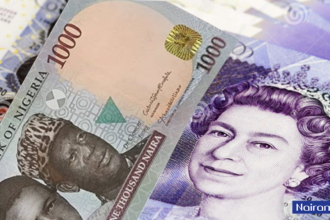- GBP/USD holds above 1.3300 to start the week.
- The technical outlook highlights sellers’ hesitancy in the near term.
- Markets will continue to pay close attention to headlines surrounding the US-China relations.
GBP/USD closed marginally lower on Friday but ended up posting small weekly gains. The pair holds its ground in the European session on Monday and trades above 1.3300.
British Pound PRICE Today
The table below shows the percentage change of British Pound (GBP) against listed major currencies today. British Pound was the strongest against the New Zealand Dollar.
| USD | EUR | GBP | JPY | CAD | AUD | NZD | CHF | |
|---|---|---|---|---|---|---|---|---|
| USD | 0.14% | -0.21% | -0.09% | 0.06% | 0.17% | 0.23% | 0.09% | |
| EUR | -0.14% | -0.41% | -0.23% | -0.09% | -0.06% | 0.08% | -0.07% | |
| GBP | 0.21% | 0.41% | 0.17% | 0.33% | 0.33% | 0.49% | 0.35% | |
| JPY | 0.09% | 0.23% | -0.17% | 0.17% | 0.28% | -1.10% | 0.44% | |
| CAD | -0.06% | 0.09% | -0.33% | -0.17% | -0.01% | 0.16% | 0.04% | |
| AUD | -0.17% | 0.06% | -0.33% | -0.28% | 0.01% | 0.15% | 0.00% | |
| NZD | -0.23% | -0.08% | -0.49% | 1.10% | -0.16% | -0.15% | -0.14% | |
| CHF | -0.09% | 0.07% | -0.35% | -0.44% | -0.04% | -0.01% | 0.14% |
The heat map shows percentage changes of major currencies against each other. The base currency is picked from the left column, while the quote currency is picked from the top row. For example, if you pick the British Pound from the left column and move along the horizontal line to the US Dollar, the percentage change displayed in the box will represent GBP (base)/USD (quote).
Markets adopt a cautious stance to start the week amid mixed headlines surrounding the US-China trade conflict. As a result, the US Dollar (USD) struggles to outperform its rivals and allows GBP/USD to keep its footing.
US Treasury Scott Bessent told ABC News over the weekend that there was a path to an agreement with China. Meanwhile, US President Donald Trump hinted that negotiations with China were under way when he was responding to questions during an interview with the Times Magazine on Friday.
However, China’s Foreign Ministry disputed Trump’s comments and said that the US should stop creating confusion. Early Monday, a spokesperson for the ministry reiterated that they have not engaged in any trade talks with the US.
Later in the week, first-quarter Gross Domestic Product (GDP) data and April employment report will be key data releases from the US. Until then, news on the US-China trade war could continue to drive GBP/USD action. In case geopolitical tensions remain high, the USD could stay on the back foot and open the door for a leg higher in the pair.
GBP/USD Technical Analysis

The Relative Strength Index (RSI) indicator on the 4-hour chart stays above 50 and GBP/USD continues to trade above the 20-period and the 50-period Simple Moving Average (SMA), reflecting sellers’ hesitancy.
On the upside, 1.3340 (static level) aligns as immediate resistance before and 1.3400-1.3410 (round level, static level). In case GBP/USD drops below 1.3300 (20-period SMA, 50-period SMA) and confirms this level as resistance, 1.3250 (Fibonacci 23.6% retracement level of the latest uptrend) and 1.3200 (static level) could be seen as the next support level.
Pound Sterling FAQs
The Pound Sterling (GBP) is the oldest currency in the world (886 AD) and the official currency of the United Kingdom. It is the fourth most traded unit for foreign exchange (FX) in the world, accounting for 12% of all transactions, averaging $630 billion a day, according to 2022 data.
Its key trading pairs are GBP/USD, also known as ‘Cable’, which accounts for 11% of FX, GBP/JPY, or the ‘Dragon’ as it is known by traders (3%), and EUR/GBP (2%). The Pound Sterling is issued by the Bank of England (BoE).
The single most important factor influencing the value of the Pound Sterling is monetary policy decided by the Bank of England. The BoE bases its decisions on whether it has achieved its primary goal of “price stability” – a steady inflation rate of around 2%. Its primary tool for achieving this is the adjustment of interest rates.
When inflation is too high, the BoE will try to rein it in by raising interest rates, making it more expensive for people and businesses to access credit. This is generally positive for GBP, as higher interest rates make the UK a more attractive place for global investors to park their money.
When inflation falls too low it is a sign economic growth is slowing. In this scenario, the BoE will consider lowering interest rates to cheapen credit so businesses will borrow more to invest in growth-generating projects.
Data releases gauge the health of the economy and can impact the value of the Pound Sterling. Indicators such as GDP, Manufacturing and Services PMIs, and employment can all influence the direction of the GBP.
A strong economy is good for Sterling. Not only does it attract more foreign investment but it may encourage the BoE to put up interest rates, which will directly strengthen GBP. Otherwise, if economic data is weak, the Pound Sterling is likely to fall.
Another significant data release for the Pound Sterling is the Trade Balance. This indicator measures the difference between what a country earns from its exports and what it spends on imports over a given period.
If a country produces highly sought-after exports, its currency will benefit purely from the extra demand created from foreign buyers seeking to purchase these goods. Therefore, a positive net Trade Balance strengthens a currency and vice versa for a negative balance.





















